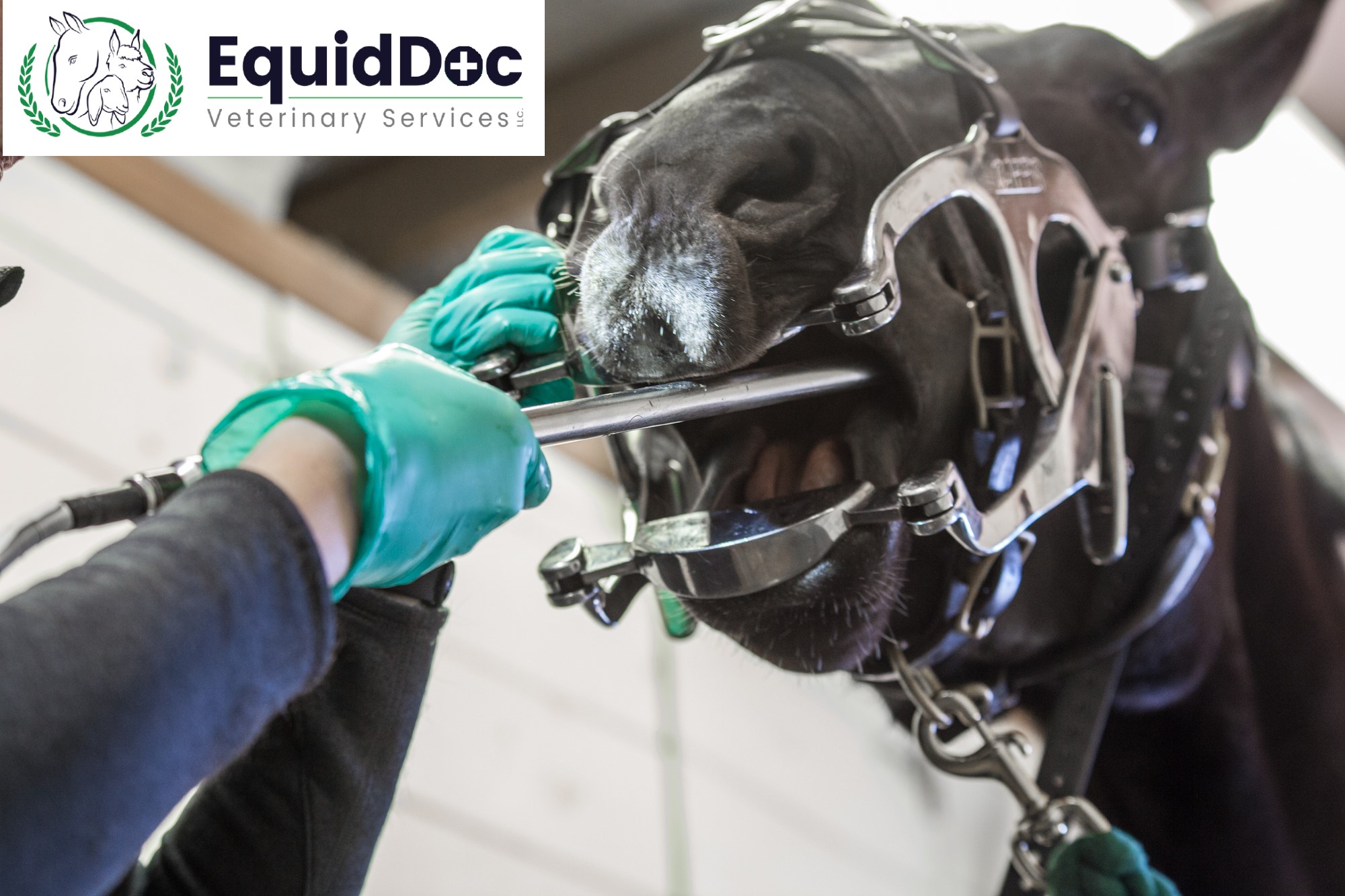In part two of our equine dental series, we’ll review what your EquidDoc veterinarian is looking for during an oral exam, the issues that can occur at different life stages, and the tools we use to diagnose problems.
Young horses should have their first true oral exam around two years of age, or sooner if they seem to be having any difficulty chewing, gaining weight, or accepting a bit. In young horses we’re looking to identify proper shedding of baby teeth and eruption of adult teeth, missing teeth, extra teeth, poor alignment of the arcades (rows of teeth), and other abnormalities that may predispose to immediate or future problems. Young teeth can also develop sharp enamel points that need to be reduced or floated. One of the more common discoveries is the presence of a “cap”, or a baby tooth stuck to the occlusal (grinding) surface of the erupting adult tooth underneath. Caps may cause your horse significant pain when chewing or no symptoms at all, but damage may occur to the underlying adult tooth if left untreated.
Middle-age horses should continue to have oral examinations by their veterinarian yearly. As reviewed in our last dentistry blog, the “float”, to smooth sharp enamel points, is just one part of the complete oral health picture. A full assessment includes a look at arcade alignment, tooth alignment, feed packing, gum health, and grinding surface wear, and more. Feed packing, excessive space between teeth, inflamed or bleeding gums, and deep pockets next to the teeth indicate that your horse may be suffering from gingivitis or periodontal disease. Periodontal disease can lead to infection in the mouth, premature tooth loss, and infection of the sinuses, jaw bones, & nasal passages. X-rays are used to assess the tooth roots and the bone the teeth sit in and helps guide the best treatment plan for your horse. Depending on the location and severity of the abnormalities mentioned above, your horse can be treated to slow or stop the progression of dental disease. It is so important to identify oral disease early to maintain comfort, performance and preserve healthy teeth for as long as possible!
Also Read: Equine Dental Series, Part 1 – What’s the Hype About Horse Teeth?
Our geriatric horses tend to have more significant dental abnormalities and may require annual or twice annual examination. Horses are living longer than ever and can run out of teeth. An expired tooth happens when there is no more tooth below the gumline, and the tooth above the gumline falls out! Each small change, such as an expired tooth, can affect the health and stability of the rest of the teeth in the mouth. Older horses are more likely to have severe periodontal disease, loose teeth, fractured teeth, infections of the oral cavity, and diseases of the incisor teeth. For example, a diagnosis that has become more common is equine odontoclastic tooth resorption and hypercementosis (EOTRH). This disease of the incisors (front teeth) can be very painful and requires x-rays to plan the removal of the diseased teeth. Another concern in older patients is the presence of infection and the immune status of the horse relative to whole body health. Blood work is used to check for simultaneous disease like Cushing’s disease (PPID) that impacts the older horse’s ability to heal and fight infection. Veterinary dental assessment is also a key factor in planning how and what to feed the older horse. Dental health exams, knowledge of overall health by means of blood work, and a full physical exam can help your EquidDoc veterinarian formulate an appropriate diet, prescribe medications and treatments, and identify management changes to help your senior equine live a long, comfortable life!
No matter the age of your horse (or donkey or mule), if they have not had a veterinary dental assessment in the last year or if you have concerns about their dental health, call EquidDoc today to schedule an appointment!

